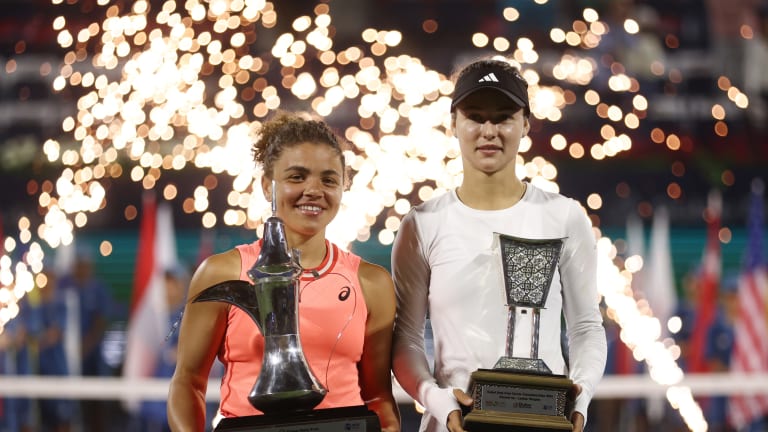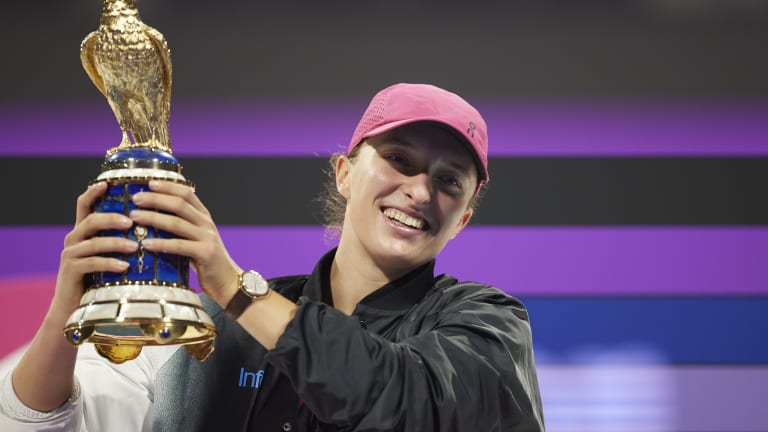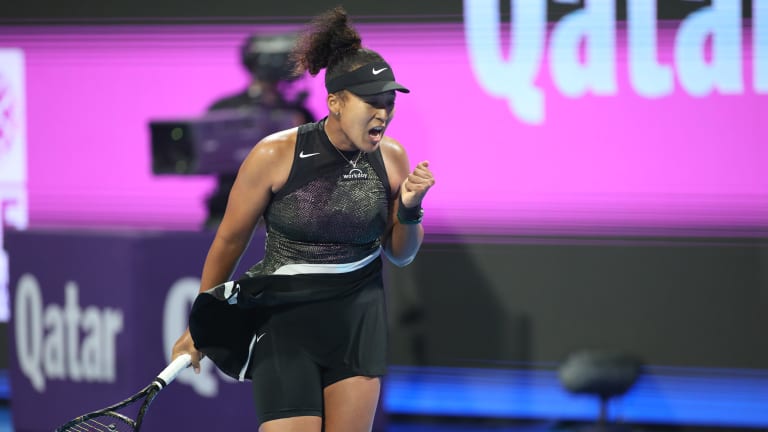WTA Dubai, UAE
Supremacy and surprise: Five things we learned about the WTA during the Doha-Dubai double
By Feb 25, 2024WTA Dubai, UAE
Jasmine Paolini rallies to top Anna Kalinskaya in all-unseeded WTA 1000 final in Dubai
By Feb 24, 2024WTA Dubai, UAE
No. 1 Iga Swiatek stunned by qualifier Anna Kalinskaya in Dubai semifinals, Paolini awaits in final
By Feb 23, 2024WTA Dubai, UAE
Iga Swiatek stunned in Dubai by on-fire Anna Kalinskaya, backing up Coco Gauff upset
By Feb 23, 2024WTA Dubai, UAE
Coco Gauff unable to book Iga Swiatek clash after falling to Anna Kalinskaya in Dubai
By Feb 22, 2024WTA Dubai, UAE
Sorana Cirstea saves six match points in Dubai quarterfinals win over Marketa Vondrousova
By Feb 22, 2024WTA Dubai, UAE
Iga Swiatek maintains perfect Zheng Qinwen head-to-head, edges into Dubai semifinals
By Feb 22, 2024WTA Dubai, UAE
Coco Gauff overcomes red-hot Karolina Pliskova, umpire dispute to reach quarterfinals in Dubai
By Feb 21, 2024WTA Dubai, UAE
Iga Swiatek solves Sloane Stephens, increases Middle East win streak in Dubai
By Feb 20, 2024WTA Dubai, UAE
Victoria Azarenka lines up Elena Rybakina early in Dubai, where all Top 4 women are entered
By Feb 19, 2024WTA Dubai, UAE
Supremacy and surprise: Five things we learned about the WTA during the Doha-Dubai double
Another dominant showing for Iga Swiatek in Doha gave way to a surprising week in Dubai.
Published Feb 25, 2024
Advertising

The Middle East swing ended with a surprise final in Dubai between Jasmine Paolini and Anna Kalinskaya.
© Getty Images
Advertising

Swiatek three-peated in Doha, the first woman since Serena Williams in Miami (2013-15) to win three straight titles at a WTA event.
© Getty Images
Advertising
Advertising

Osaka reached the quarterfinals in Doha, and nearly got a shot at Swiatek in the semifinals.
© Getty Images